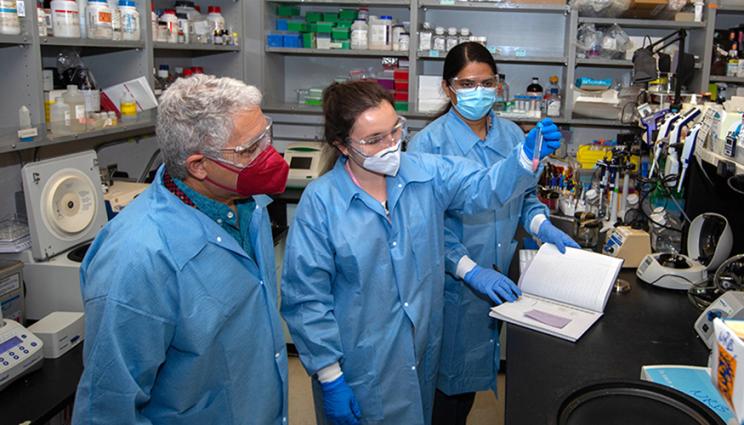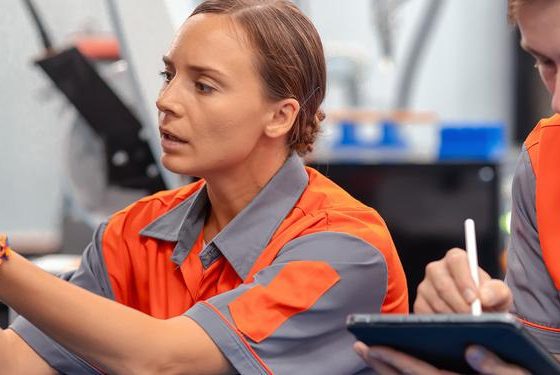
From our partners:
An international team of scientists has found new biomarkers that can be used for diagnostic purposes and potentially as predictive tools of the risks associated with deep-space flight.
In their study, the team, including three researchers from Lawrence Livermore National Laboratory (LLNL), examined approximately two-decade-old blood samples from space shuttle astronauts before and after flight.
Their findings have been published online in the journal Frontiers in Genetics.
“We knew that nucleic acid within exosomes can be intact for 15-20 years, but we weren’t sure how space travel would affect them and whether we would find intact exosomes containing nucleic acids in the two-decade-old blood from space shuttle astronauts that was stored away,” said LLNL biomedical scientist Matt Coleman, of the Lab’s Biology and Biotechnology Division.
“This is an amazing surprise that we’re getting so much information about the RNA in the exosome, the different types of RNA encapsulated within the exosomes and information about the genes and biological processes they regulate,” said Coleman.
Exosomes are small extracellular lipid-protein spheres that carry other molecules inside, allowing cells and tissues to communicate with each other. Long non-coding RNA (lncRNA), which controls and turns on cell mechanisms, can be found in exosomes among other types of RNA.
In addition to researchers from LLNL, the team included scientists from the Icahn School of Medicine at Mount Sinai (New York), the University of Virginia School of Medicine, the University of California, San Diego, Ohio State University Wexner Medical Center and The Institute of Molecular Biology based in Yerevan, Armenia.
“Space changed the RNA within the exosomes of the astronauts who went into space,” Coleman said. “They had signatures that they were astronauts; they had been in a reduced-gravity environment and exposed to doses of space radiation.”
In their study, the researchers found 27 different expressed lncRNAs, or biomarkers for spaceflight, that changed between pre-spaceflight and after flight.
“Something about spaceflight changed the amount of RNA in the astronauts’ blood,” Coleman said. “They were in key pathways that regulate transcription, cell-to-cell signaling and intercellular signaling.
“When we compare before and after space travel, we see a change in the amount of lncRNA — either more or less — and those changes directly affect the genes that are turned off or on in important cellular functions associated with neurodegeneration, general health and cardiovascular disease.”
The team of scientists analyzed RNA isolated from exosome samples of blood that came from 18 space shuttle astronauts between 1998 and 2001, including three whose samples were extremely robust.
Blood samples were taken 10 days before the astronauts went into space and then additional blood samples were taken three days after they returned from low-Earth orbit.
“Because the lncRNA can modulate a large number of genes, understanding those genes and the pathways they’re associated with — such as general health or cardiovascular disease — would allow us to identify who needs to get specific medicine, change their diet or get more exercise to ward off any negative effects of spaceflight,” Coleman said.
“These kinds of studies are trying to fill the knowledge gaps to first understand the effects of working and traveling in low-Earth orbit and then of deep space on the human body.”
Nearly all past studies have focused on the effects of space on astronauts in low-Earth orbit, such as shuttle astronauts working aboard the International Space Station.
“As we move to traveling to the moon and Mars, the space environment is going to be dramatically different. There will be greater exposure to ionizing radiation and astronauts will be in space for longer periods with greater times of confinement and extended problems with gravity,” Coleman said.
The LLNL capabilities that aided the team’s study included 30 years of expertise in genomic science, DNA repair and researching the effects of ionizing radiation through sequencing for the Human Genome Project.
In addition to Coleman, two other LLNL researchers — biomedical scientist Aimy Sebastian and graduate student Angela Evans — were part of the team.
The study was funded by the NASA Human Research Program and Baylor University’s Translational Research Institute for Space Health, in addition to the LLNL Laboratory Directed Research and Development program. The study was led by David Goukassian of the Cardiovascular Research Center at Icahn School of Medicine at Mount Sinai in New York City.
While the team’s current study focuses on lncRNA, the scientists expect to publish three more papers over the next three to six months about other types of RNA identified within exosomes that also play a role in health and diseases and could furnish more information about the risks associated with spaceflight.
For enquiries, product placements, sponsorships, and collaborations, connect with us at [email protected]. We'd love to hear from you!
Our humans need coffee too! Your support is highly appreciated, thank you!








